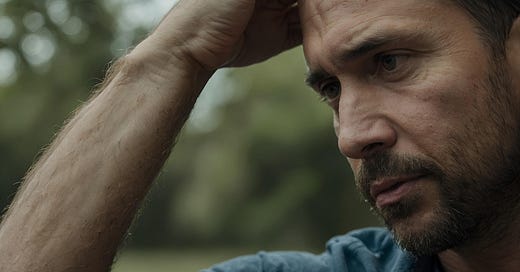I have been playing around with the latest tools for image, video, and voice creation. For a long time, I have wanted to try to convert some of my written works into more audio-visual forms, particularly for folks with types of chronic illnesses which can make it difficult to focus on long texts. The available audio and visual tools now make this easier and more straightforward. Below are my first two attempts/experiments at this [for those who do prefer to read, I have also included the transcript beneath each video]. Note that while the visuals and voice are computer generated, the words themselves are not, they are 100% mine!
Feedback and thoughts on the format/effectiveness of these welcome. Indeed, I am collecting the “Best of…” [most pragmatic, practical] examples of my writings on the theme of chronic illness, in the “Gary’s Content” area of the HOPE shortcut online community, but if folks think it is helpful, I will create and include audio/visual versions in these lessons too.
Transcript: There is the temptation to hammer away at the exercises and therapies we hope will make us better. Unfortunately the healing process can’t be rushed. It takes time. Over-doing it just exhausts the system more and more. The danger is we just keep hammering away at it, exhausting our system further and further in a negative spiral of descent.
The second issue is that for many of us who become ill is that we hold ourselves to impossible standards. This is often translated to our healing processes, so when we don’t manage to fit in a busy schedule of exercises and therapies into our day, we end up making things worse by feeling like we’re failures, or getting stuck in looping thoughts of self-doubt and guilt. Eventually our body, once again, says no. Another spiral of descent.
We need to remember that healing is primarily about relaxation, calming our nervous and endocrine systems. So being relaxed about our healing activities is also vital.
Transcript: I have found in taking the background histories of people with chronic conditions and movement disorders that, for many of us, in the years before diagnosis we tended to make ourselves into mighty oak trees, isolated and standing alone in a field.
We put more and more responsibility on to our own shoulders, in the very mistaken idea that by gathering power to ourselves, we can take more control of our own lives, and we begin to refuse to accept or ask for help from others. We become the worlds worse delegators.
We make ourselves strong and unbreakable, but we also make ourselves top heavy in the pursuit of taking on more and more, in the mistaken belief we can control the world around us this way. We isolate ourselves, pushing others away, so we grow alone in the field, instead of in the safety of the forest surround by others who could support us. We become more determined, more set in our ways, and we do feel stronger as we grow.
Then the hurricane comes, that tips us into chronic symptoms. An event we have no control over. We don’t break. We are uprooted wholesale. We simply fall over.
In my conversations with others, I see two major outcomes in people with Nervous System dysregulation symptoms, and these outcomes depending markedly on attitudes.
The first outcome is rapid decline, as in those of us continue to fall over and for whom the fallen Oak begins to rot from the inside most rapidly. This tends to be truest in those of us who simply want to return to our old lives, to keep going exactly the way we were before. It usually therefore involves a very rigid sense of self, a holding on to their Oak personality for dear life, with a very strong sense that this aspect is their true self, and indeed is something to be celebrated.
The second outcome is in getting better, partial recovery, living well with the disease, slowest decline, or being happy anyway. The common factor in all of the people I know who are like this is that they have realized the folly of the Oak. They know they cannot simply stand up in the form they were before.
They have all gone through a process of change, of evolution, and they’re all evolving in to Willow trees, in the heart of the forest. They accept help and support of others around them. They seek out water and nutrients. They become flexible in nature.
In short, they not only embrace change in themselves, but learn to bend with the wind of changes.





Very relatable! We can't be everything to everybody. Wish I took care of myself years ago. The mighty oak has fallen.
The Bach flower essence of Oak is helpful for people who take on too much responsibility as you describe.